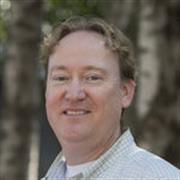
Edwin Maas
Biography
Edwin Maas received a master's degree in neurolinguistics from the University of Groningen (the Netherlands), and worked as a clinical linguist at the Rotterdam Aphasia Foundation before pursuing his PhD in language and communicative disorders from San Diego State University and the University of California, San Diego. His early research focused on verb and sentence processing in aphasia and basic mechanisms of sentence comprehension. His interest in treatment research led him to shift focus to speech production and its disorders. To supplement his background and training in neurolinguistics, he obtained postdoctoral training at Boston University and the Massachusetts Institute of Technology with a focus on speech motor control. He joined Temple University’s Department of Communication Sciences and Disorders in 2015.
As co-director of the Speech, Language and Brain Laboratory (SLAB Lab), he conducts research on speech production across the lifespan in unimpaired individuals and in various populations with speech and/or language disorders, such as aphasia, apraxia of speech, and phonological disorders. Two central, overarching questions motivate and drive this research: (1) What is the underlying nature of a given speech disorder? and (2) How can we optimize treatment for speech disorders?
Regarding the first question, research focuses on the various underlying mechanisms, representations and processes involved in generating speech, how these may be disrupted in speech disorders, and how we can identify and characterize such disruptions. This research line combines different methodologies, including perceptual speech error analysis, psycholinguistic reaction time studies, acoustic analysis, and neuropsychology. Regarding the second question, Dr. Maas conducts treatment studies to determine the efficacy of treatment for speech disorders, as well as to identify practice conditions that optimize speech motor learning (principles of motor learning derived from the motor skill learning literature). Both lines of research are theoretically motivated and have implications for models of normal speech production as well as for clinical practice, including diagnosis and treatment.
Education
- PhD, Language and Communicative Disorders, San Diego State University
- MA, Neurolinguistics, University of Groningen
- BA, Dutch Linguistics and Literature, University of Groningen
Labs: SLAB Lab
Google Scholar: Edwin Maas's Google Scholar profile
Courses Taught
|
Number |
Name |
Level |
|---|---|---|
|
CSCD 4222 |
Speech and Language Disorders: Adults |
Undergraduate |
|
CSCD 5524 |
Foundations and Management of Motor Speech Disorders |
Graduate |
|
CSCD 5546 |
Research Methods in Communication Sciences and Disorders |
Graduate |
|
HRPR 5999 |
Research Experience in Health Professions |
Graduate |
Selected Publications
-
Beiting, M. & Maas, E. (2021). Autism-Centered Therapy for Childhood Apraxia of Speech (ACT4CAS): A Single-Case Experimental Design Study. Am J Speech Lang Pathol, 30(3S), pp. 1525-1541. United States. doi: 10.1044/2020_AJSLP-20-00131
-
Spencer, C., Vannest, J., Maas, E., Preston, J.L., Redle, E., Maloney, T., & Boyce, S. (2021). Neuroimaging of the Syllable Repetition Task in Children With Residual Speech Sound Disorder. J Speech Lang Hear Res, 64(6S), pp. 2223-2233. United States. doi: 10.1044/2020_JSLHR-20-00269
-
Mailend, M., Maas, E., Beeson, P.M., Story, B.H., & Forster, K.I. (2021). Examining speech motor planning difficulties in apraxia of speech and aphasia via the sequential production of phonetically similar words. Cogn Neuropsychol, 38(1), pp. 72-87. England. doi: 10.1080/02643294.2020.1847059
-
Murray, E., Iuzzini-Seigel, J., Maas, E., Terband, H., & Ballard, K.J. (2021). Differential Diagnosis of Childhood Apraxia of Speech Compared to Other Speech Sound Disorders: A Systematic Review. Am J Speech Lang Pathol, 30(1), pp. 279-300. United States. doi: 10.1044/2020_AJSLP-20-00063
-
Terband, H., Rodd, J., & Maas, E. (2020). Testing hypotheses about the underlying deficit of apraxia of speech through computational neural modelling with the DIVA model. Int J Speech Lang Pathol, 22(4), pp. 475-486. England. doi: 10.1080/17549507.2019.1669711
-
Mailend, M. & Maas, E. (2020). To Lump or to Split? Possible Subtypes of Apraxia of Speech. Aphasiology, 35(4), pp. 592-613. England. doi: 10.1080/02687038.2020.1836319
-
Maas, E., Gildersleeve-Neumann, C., Jakielski, K., Kovacs, N., Stoeckel, R., Vradelis, H., & Welsh, M. (2019). Bang for Your Buck: A Single-Case Experimental Design Study of Practice Amount and Distribution in Treatment for Childhood Apraxia of Speech. J Speech Lang Hear Res, 62(9), pp. 3160-3182. United States. doi: 10.1044/2019_JSLHR-S-18-0212
-
Terband, H., Namasivayam, A., Maas, E., Brenk, F.v., Mailend, M., Diepeveen, S., Lieshout, P.v., & Maassen, B. (2019). Assessment of Childhood Apraxia of Speech: A Review/Tutorial of Objective Measurement Techniques. J Speech Lang Hear Res, 62(8S), pp. 2999-3032. United States. doi: 10.1044/2019_JSLHR-S-CSMC7-19-0214
-
Maassen, B., Terband, H., Maas, E., & Namasivayam, A. (2019). Preface to the Special Issue: Select Papers From the 7th International Conference on Speech Motor Control. J Speech Lang Hear Res, 62(8S), pp. 2923-2925. United States. doi: 10.1044/2019_JSLHR-S-CSMC7-19-0247
-
DeDe, G., Hoover, E., & Maas, E. (2019). Two to Tango or the More the Merrier? A Randomized Controlled Trial of the Effects of Group Size in Aphasia Conversation Treatment on Standardized Tests. J Speech Lang Hear Res, 62(5), pp. 1437-1451. United States. doi: 10.1044/2019_JSLHR-L-18-0404
-
Mailend, M., Maas, E., Beeson, P.M., Story, B.H., & Forster, K.I. (2019). Speech motor planning in the context of phonetically similar words: Evidence from apraxia of speech and aphasia. Neuropsychologia, 127, pp. 171-184. England. doi: 10.1016/j.neuropsychologia.2019.02.018
-
Terband, H., Maassen, B., & Maas, E. (2019). A Psycholinguistic Framework for Diagnosis and Treatment Planning of Developmental Speech Disorders. Folia Phoniatr Logop, 71(5-6), pp. 216-227. Switzerland. doi: 10.1159/000499426
